Supernatural Creatures in Early Russian Mythology and Folklore
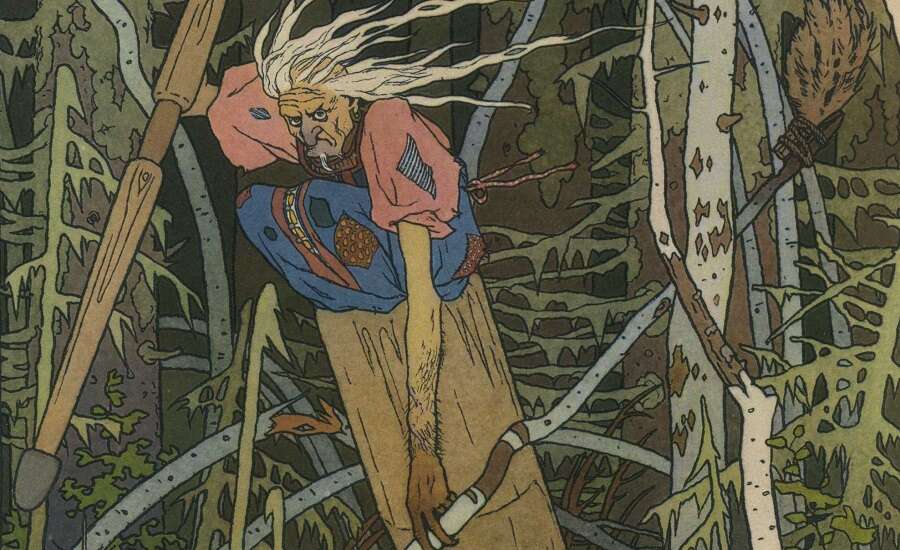
"The Baba Yaga" by Ivan Bilibin, 1900
What supernatural creatures did early Russians believe in?
- Patrons of the Household. The Domovoy (House Elf) is the master and patron of the house. If a domovoy curses a house, a disaster will befall so it is better to stay on good terms with him.
- Forest, field and water spirits. The Leshiy (Wood-Goblin) is the master of the forest and may be dangerous if one breaks the rules while in his realm. Vodyanoys (water-spirits) live in swamps, lakes and rivers
- Witches, wizards and znakhars (wisemen, witch-doctors) have magical powers and can be both good or evil. Znakhars cure people using their powers
- Pledged souls: mermaids, upirs or kikimors. Pledged souls are stuck on earth because their deaths were not due to natural causes. They then became mermaids, upirs or kikimors.
Ancient Slavs, ancestors of the modern Russian people, believed that many supernatural beings existed around them - in nature and in their homes. These supernatural creatures may have been good or evil, brought misfortune or wealth, protected the house or helped not to get lost in the forest. Today these beliefs may seem a bit outdated, however they are reflected in the Russian culture - ancient and modern. Many factors of Russian life nowadays evolved from these earlier beliefs of witches, wizards and spirits. Meet the most remarkable of those creatures.
Patrons of the Household
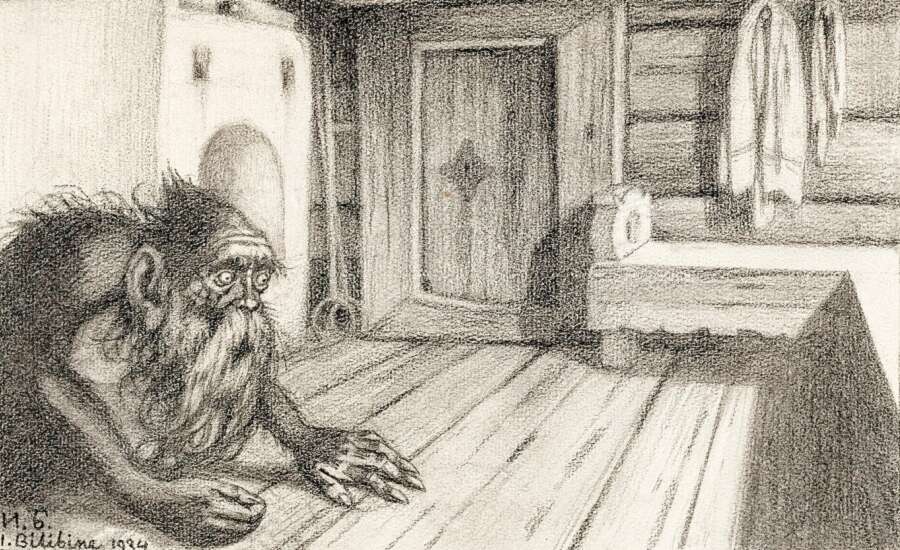
"The Domovoy" by Ivan Bilibin, 1934
The Domovoy (House Elf) is the master and patron of the house. Family well-being and the health of humanity and cattle depend on this creature. He looks like a short old man with a beard, claws and stuck up long ears. The wealthier the house the thicker domovoy's hair is. He can turn into a cat, a rooster, a snake, a hare, a wolf or a dog. If a domovoy curses a house, a disaster will happen – it may be a fire, destruction of the house, or even a death. A domovoy keeps fire, brings water, introduces order and looks for cattle. He may have a family as well. His daughter sits under the floor and spins yarn.
The Bannik (Bath Elf) is the master of the bath. He is pictured as an old man with a beard or a dirty man black from soot and ash with bright eyes. More often he is more wicked than kind. He can steam a man to death, throws stones and garbage, and he howls and snores.
Forest, Field and Water Spirits
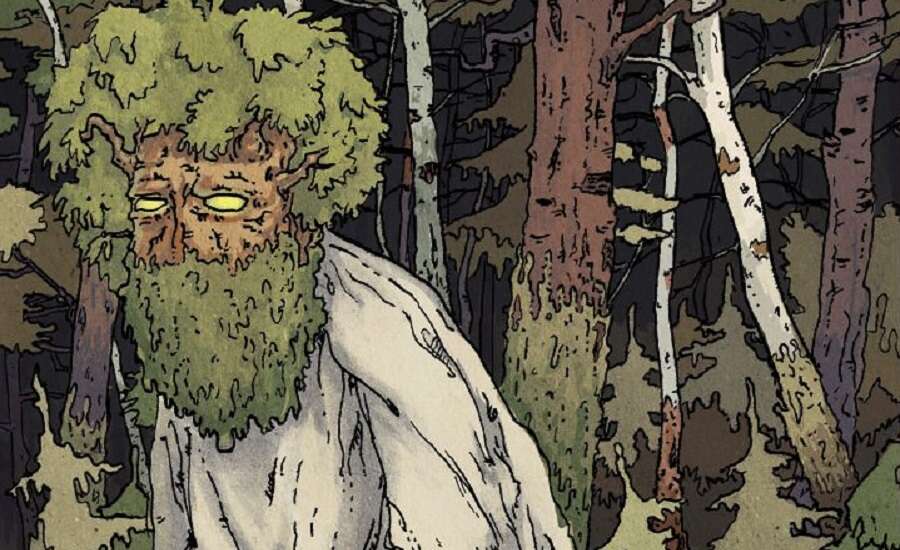
"The Leshiy" by Ivan Bilibin
The Leshiy (Wood-Goblin) is the master of the wood, which he is one of the primary nature spirits. According to common belief, some 'pledged' dead became leshiys. He is pictured as an old man with a white beard in peasant clothes, overgrown with fir-bark. His eyes are white, he has crooked claws on both his fingers and toes and his skin is blue. Moreover, he easily changes his height. Sometimes he can be taller than the trees and other times he remains at an average human height. He can look like a woman or an old man, a friend or a relative. A leshiy turns into a hare, a bear, a white wolf, even a bush, a tree or a mushroom. With his arrival strong winds begin to blow and one can hear the noise of the trees swaying. The leshiy punishes the ones who break the rules: people who enter the woods without a prayer or whistle too loudly. This spirit leads such travelers astray, hides their hats and baskets, laughs and claps his hands. Sometimes, when he is feeling generous, he helps hunters and shepherds catch animals or save cattle. During winter months, leshiys go to the other world by descending underground, usually by falling.
The Vodyanoy (Water-Spirit) lives in swamps, lakes and rivers. He is a bald old man with a grey beard, dirty and blue skinned. Sometimes he has a fish or cow tail, the feet of a goose or a horn on his head. He can be invisible; can turn into a fish, a bird, a beast or a pet. In winter he sleeps, in spring he brawls with others and breaks ice.
The Polevik (Field-Spirit) is a horned young man with a tail and long legs. His whistle is a call for strong winds. He guards underground treasures. When angry, he can keep the rain clouds off the field, beckons flies and destroys fences.
Witches, Wizards and Znakhars
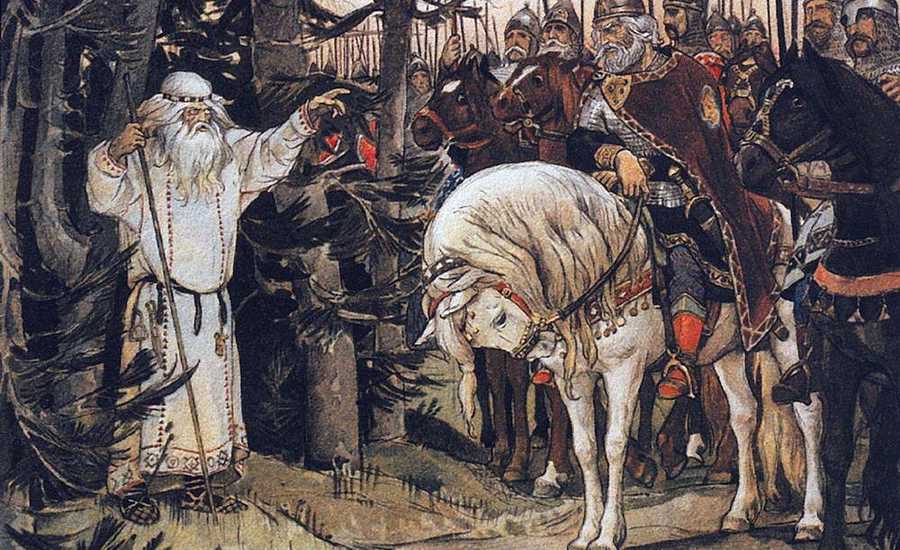
"Prince Oleg Meets Kudesnik (Wizard)" by Viktor Vasnetsov, 1899
A witch is a woman who has knowledge. There are "learned" and "born" witches, who inherit their knowledge. "Born" witches can be either evil or good, "learned" ones are only evil. Every witch has a tail and restless eyes. She may have a hump or a hooked nose. A witch sells her soul to the devil. She can be invisible, turn into any living creature or object (such as a stick, a basket, a haystack, a clew). Witches spoil cattle and bereave cows of milk (at the same time witches' cows produce lots of milk). Witches make drinks from magic herbs; bring diseases, hail heavy showers, fire, and floods. But sometimes they can protect others from diseases and help grow a good harvest as well.
On the eve of big holidays, such as Midsummer Night, Easter, Whitsunday and Christmas, witches gather on a Sabbath. They fly together on old trees (oaks, birches, pear-trees). It is believed that in Kiev they gather on Bald Mountain. In order to fly on a Sabbath, a witch must be smeared with an ointment made of magical herbs. Then she rides a poker or a birch stick and flies out from the chimney. On a Sabbath, witches feast, dance with devils, and fight.
A wizard has the same magical powers as a witch does. He is imagined with red-hair and is bearded, crooked, and one-armed with black or red eyes. His power is in his teeth and nails. His teeth grow in two rows and his nails have never been cut. He has a tail and a growth under his knee where his soul resides. His soul escapes in order to wander the town during the night. When angered, a wizard can make a man do useless things (for example run around in circles or hallucinate).
A znakhar (wiseman, witch-doctor) is a man who has magical knowledge. He can cure people and animals, protect them from evil sorcery, chase away hail clouds and predict the future. Znakhars use the magic powers of exorcisms and the healing powers of water and plants. Even in the 19th century, sick people more often went to znakhars than to doctors. In his exorcisms a znakhar appeals to God and other good-natured powers.
Pledged souls: Mermaids, Upirs or Kikimors
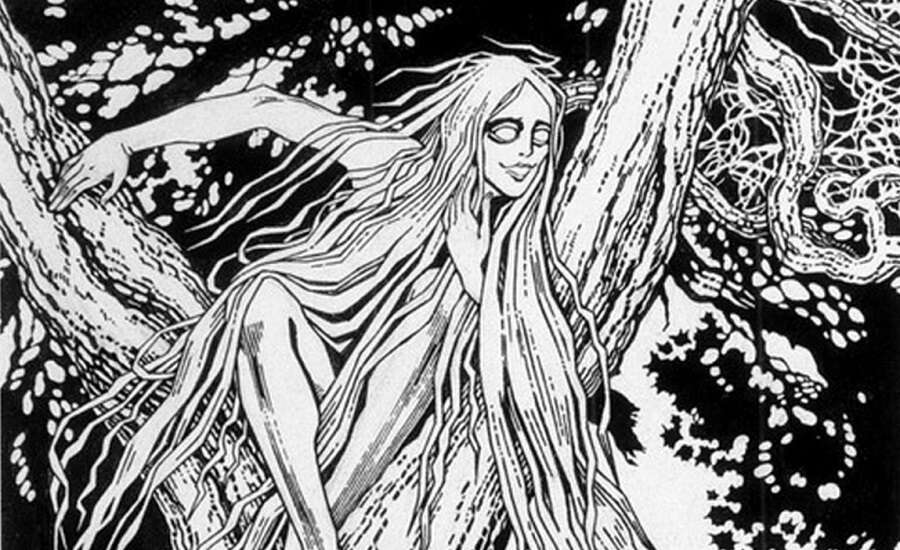
The Rusalka (Mermaid) by Ivan Bilibin, 1934
Ancient Slavs, like many other nations, distinguished death into two categories. Deaths by natural causes and old age go directly to the other world (heaven). Those that died ahead of time, childless, without christening, etc., were called "pledged". The pledged are souls that are stuck on earth and became mermaids, upirs or kikimors.
Upirs are the dead, who rise from their graves at night, attack people and animals in order to drink their blood. They can look like any ordinary man, a cat or a bat, but with red eyes. They provide the most danger for newly-married couples and infants. The only way to escape upirs is to drive a stake into their grave.
Kikimors are murdered or cursed children. A kikimora is an ugly old woman in rags, who is small and dried-up. She torments cattle and can hound a man to death.
Drowned women, strangled women, suicides and un-christened children are turned into mermaids. They are pretty girls with loose hair. Legend has it that after seven years of being a mermaid, the souls of un-christened children rise to heaven and ask God to christen them.



